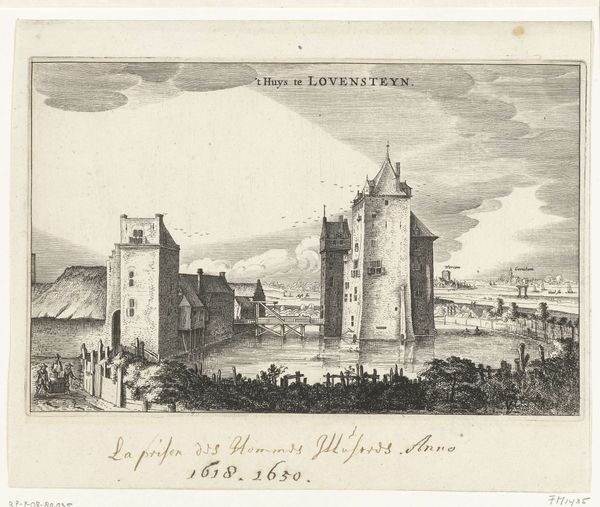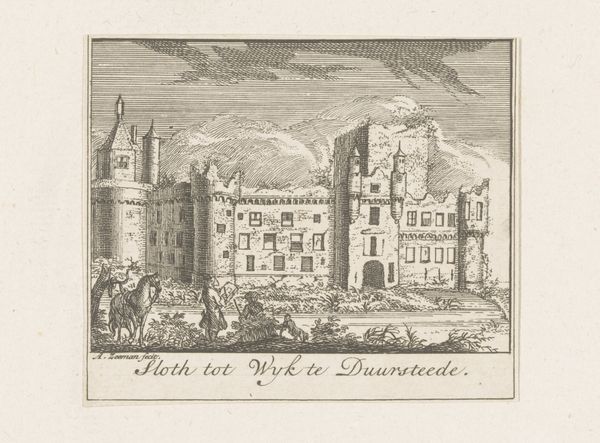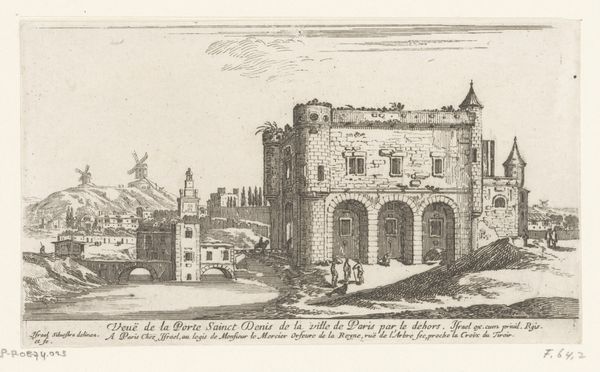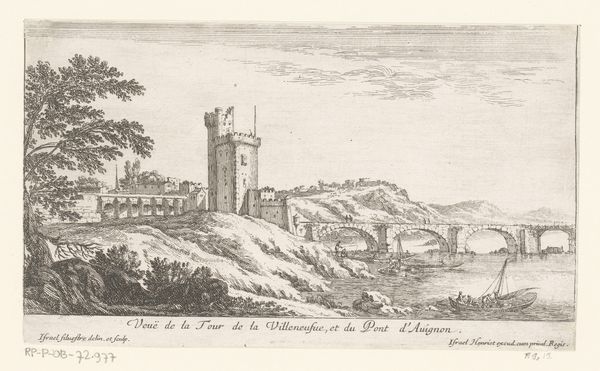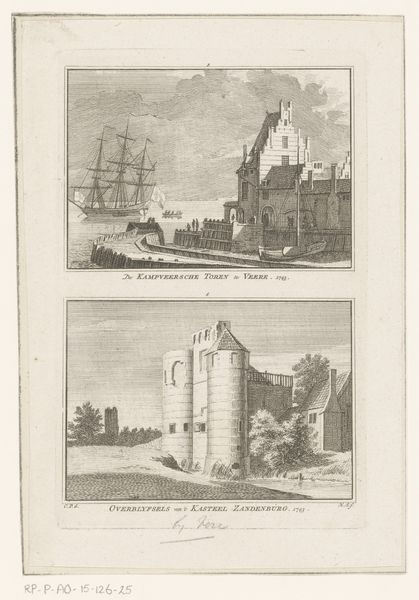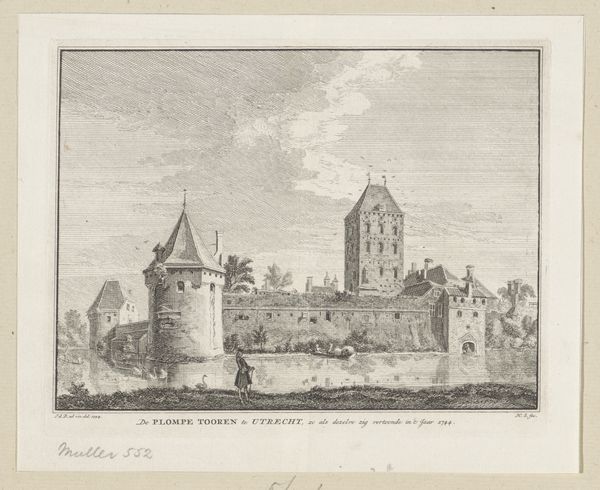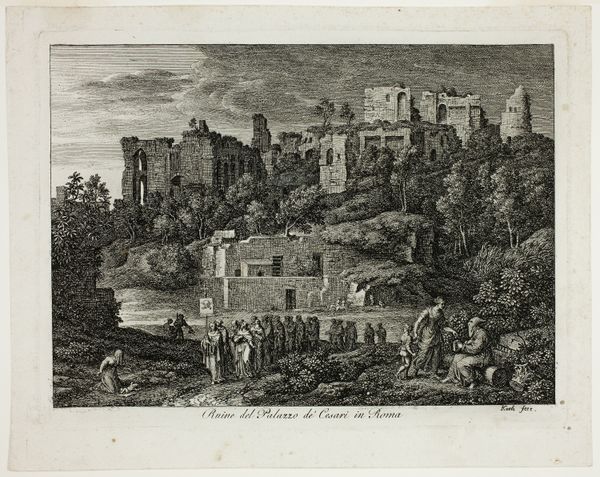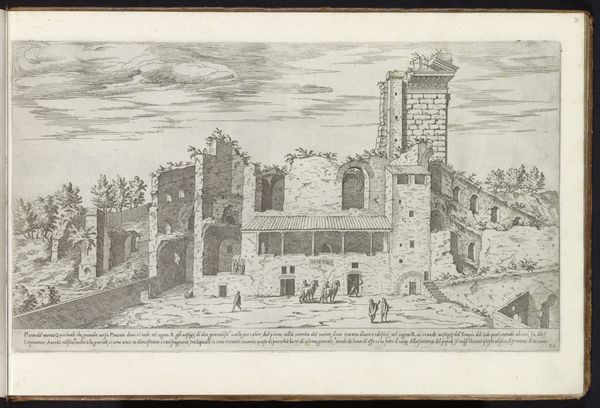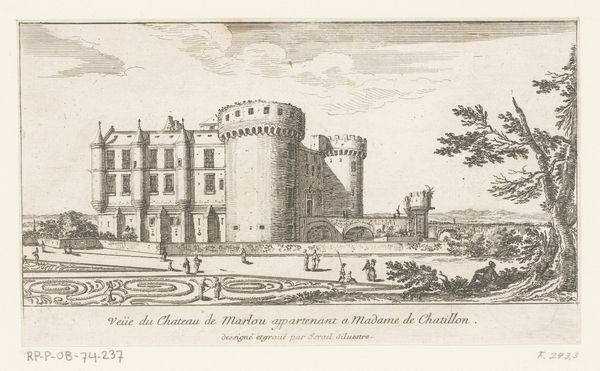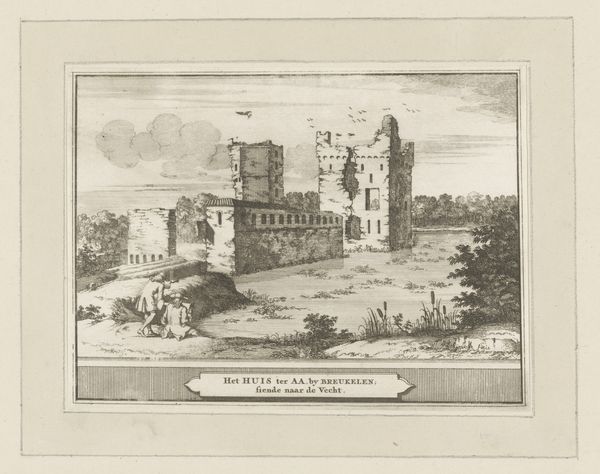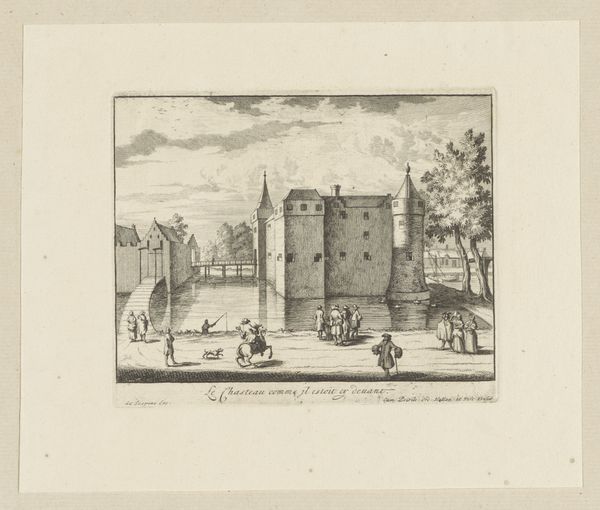
print, etching, engraving, architecture
#
baroque
# print
#
etching
#
old engraving style
#
landscape
#
line
#
engraving
#
architecture
Dimensions: height 210 mm, width 270 mm
Copyright: Rijks Museum: Open Domain
Editor: This engraving, "Zes mannen met scheppen voor een kasteel," which translates to "Six Men with Shovels Before a Castle," by Jacques Philippe Le Bas, made around 1740, features meticulous lines etched on paper. I’m immediately struck by the contrast between the detailed architecture and the almost cartoonish figures in the foreground. What is your interpretation of this piece? Curator: It's a fascinating piece precisely because of that contrast you mention. The rigid lines depicting the castle speak to the established power, but look closer at the laborers. Their shovels, their very labor, is literally reshaping the land before this symbol of authority. How does the choice of engraving as a medium impact your reading? Editor: Well, knowing that this is an engraving makes me think about the process—the time and effort involved in carving each line. It makes the laborers' physical efforts mirror Le Bas's artistic effort, almost elevating their status. Curator: Exactly! Consider the Baroque period. Ostensibly, the artwork aligns to its focus on grandeur and ornate detail visible in the castle. But, through the act of reproducing this image as a readily available print, it is distributed to a broader market of consumers. It subtly democratizes the art, challenging traditional boundaries. Who are these laborers really working for? Editor: That makes me think about the market for these kinds of prints. Were they meant to be viewed as simple depictions, or was there a social commentary embedded within the availability of such prints to commoners? Curator: A good question. Considering the social conditions, one could say this piece underscores labor and the increasing accessibility of imagery as a form of consumption, while simultaneously illustrating class structures. By representing this castle being worked on, how is this engraving documenting production? Editor: Wow, I didn't initially consider how much the act of making and consuming this print reveals about social structures of that time. It’s so much more than just a pretty picture! Curator: Indeed. Focusing on the process, the materials, and the historical context of production completely alters our understanding.
Comments
No comments
Be the first to comment and join the conversation on the ultimate creative platform.
